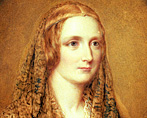Education Higher Education
Following Frankenstein: Mary Shelley, The Monster, and Medical Science

The Following Frankenstein: Mary Shelley, the Monster, and Medical Science module is divided into three two-hour classes that explore thematic and temporal features of Mary Shelley’s creation and its endurance. Each of the classes includes a brief introduction, a list of readings, visual resources, and discussion questions. Information about the author of the module, suggested uses, and academic objectives, is also available online at About the Module.
focuses on developments in medicine and the natural sciences in the late 18th century (galvanism, resuscitation, and blood transfusion) that informed Mary Shelley and her circle’s investment in the Promethean promise of control of the natural world.
explores the transfer of Mary Shelley’s monster to the silver screen. The most popular cinematic treatment of Frankenstein, the 1931 Universal film featuring Boris Karloff as the creature, also drew on contemporary developments in the life sciences, including eugenics, organ transplantation, and re-animation.
provides students with the opportunity to evaluate the continuing resonance of the Frankenstein story for current discussions of biomedical innovation. Students may explore references to Frankenstein in debates over genetically modified foods, human cloning, and stem cells and assess the meaning of such references for public policy.


